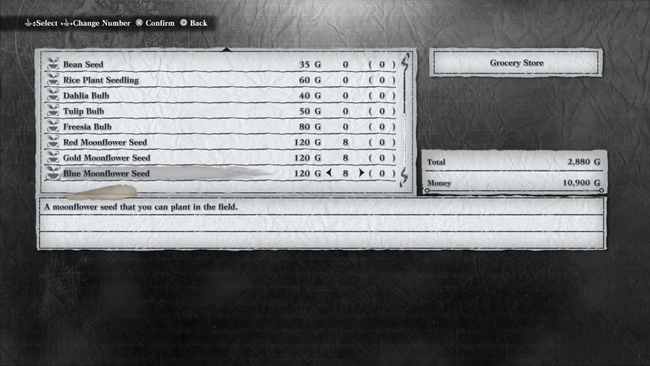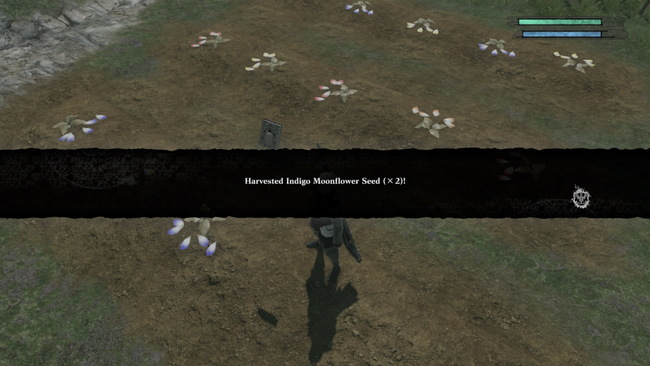
Nier Replicant Gardening guide: how to cultivate flowers and the Lunar Tear for the Legendary Gardener trophy
There's a lot of different things to do in Nier Replicant, but one of the things that most fans of the original release remember quite keenly - for reasons good and bad - is the Gardening mini game and Legendary Gardener, that mini game's associated trohpy/achievement.
While the rest of Nier has you battling through the hoardes with a range of weapons, or taking downtime to instead do battle with fish, the gardening is a more relaxed activity... in part because, by design, it'll take hours, if not days, to see some actions to fruition - unless you cheat.
The end goal of Nier's gardening is to produce a Lunar Tear, the White Moonflower that holds significance in the story of the game and to several characters within it. In this guide, we explain how to work your way to being a master gardener.
- Gardening Unlock & Explainer
- Seeds List for Vegetables & Flowers
- How to Crossbreed to create Hybrid Flowers and get the Lunar Tear / White Moonflower

Nier Replicant Gardening Unlock & Explainer
In order to get to gardening, cultivation and harvesting, you’ll first need to unlock the garden at all. There’s two ways to do this, depending on where you are in the game.
In the first half of the game, you’ll need to complete a specific side quest, ‘Shopping List’. This quest is obtained from a woman NPC found in the Marketplace area of your home Village. This unlocks the basic feature of being able to use the garden that’s next to your home at all. However, you do have a limited amount of space. You can level that up, however.
To maximize your garden, you’ll then want to complete the 'A Return to Shopping’ side quest, which is also only available in the first half of the game. This one comes from the Florist Shopkeeper in your home village. As a result of this, you get a bunch of different gardening-related items - and increase the size of your garden, allowing you to plant more seeds and therefore get a greater yield. Which is important - as we’ll explain.
In the second half of the game, you can unlock the garden, the expansion, or both by purchasing the Cultivator’s Handbook item from the village florist; it costs 5000 Gold. You only need this if you missed one or both of the quests in the first half, to either unlock or expand the garden.
In both Nier Replicant and Gestalt, gardening involves a real-time clock. That means that once planted, items won’t bloom and be ready to harvest until real-life time has passed. The garden will keep growing even when you’re not playing the game. That’s a cool feature, but it can, to be honest, make things a little bit difficult… especially if you’re hunting that Legendary Gardener achievement/trophy.
Vegetable & Flower Seeds in Nier Replicant
Items you can plant can be purchased from Florists and Grocers, found out in the world, and sometimes also drop from enemies. The various gardening plant items can be split into two different categories - seeds for flowers, and seeds for fruit.
The items you get as a result of both types can often be spent for things like health restoration, but they’re also commonly required for side quests. You’ll often have to harvest to get those items to complete certain quests. They can be sold as well - and turning over a constant flow of flowers in your garden is a great way to make money for weapon upgrades.
Vegetables:
- Bean Seed
- Bell Pepper Seed
- Eggplant Seed
- Gourd Seed
- Melon Seed
- Pumpkin Seed
- Rice Plant Seedling
- Tomato Seed
- Watermelon Seed
- Wheat Seedling
Flowers:
- Dahlia Bulb
- Tulip Bulb
- Freesia Bulb
- Red Moonflower Seed
- Gold Moonflower Seed
- Blue Moonflower Seed
- Indigo Moonflower Seed
- Peach Moonflower Seed
- Pink Moonflower Seed
- White Moonflower Seed (Lunar Tear)

How to grow Hybrid Flowers and get Peach, Indigo, Pink, and White Lunar Tear flower seeds
To get Hybrid Flowers, you need to plant seeds of different types next to each other in the same row. This gives a chance of cross-pollination, to produce new flower colors and seed types.
In order to get seeds, you need to let the flowers grow, bloom, and then die. If you want seeds, DON'T pick the flowers. When the flowers are flat on the ground, you can then harvest them - and instead of a flower, you’ll get the seeds. Watering and Fertilizer will impact the number of seeds, but not the outcome in general.
Here’s how your chances of spawning a cross-pollinated flower break down, and what seeds you’ll need to put together to do so:
-
Red & Gold seeds adjacent gives a 20% chance to get Peach Moonflower Seeds.
-
Blue & Gold seeds adjacent gives a 20% chance to get Indigo Moonflower Seeds.
-
Indigo & Red seeds adjacent gives a 5% chance to get Pink Moonflower Seeds.
-
Pink & Peach seeds adjacent gives a 1% chance for White Moonflower Seeds (aka the Lunar Tear).
These stats sound pretty brutal, but there are some tips and tricks you can use to maximize your chances of growing the sort of seeds you need.
You’ll be able to buy Red, Gold, and Blue seeds from the various florist themed shops across the world of Nier Replicant - and even, rarely, have seeds drop from some shade enemies. The rest of the seeds you’ll need to cultivate, which means farming your way up the chain - using the Red, Gold, and Blue seeds you purchase to work up to Indigo, Peach and Pink - and then using those seeds to eventually get the White seeds - which cultivate the legendary Lunar Tear.
The best way to achieve results is to alternate your planting. If you complete the two harvest-related side quests, you’ll have three total rows of planting spots, each able to accept five seeds. That’s fifteen planting spots total.
Look at the stats above; each Red & Gold seed planted adjacent to each other has a 20% chance to produce Peach. So, for the maximum chance, in each row of five seeds you could plant Red / Gold / Red / Gold / Red, which gives you a good chance of getting what you want.
Plant them sequentially, in order, alternating - which appears to give you a better chance than just planting all of one color, then all of the other. Once they're ready, harvest and, if you still don’t have what you need, go again. Simple. Under natural circumstances, it'll take around a day for flowers to fully grow and then die again.
The exact chance varies depending on the seeds, of course - and it is random, so you’ll need to pray to the RNG gods and keep repeating to work your way up the chain of seeds.
It's worth noting that if this is frustrating you, a totally valid option is to quit planting flowers for now and play through the rest of the story. If you see all endings in Nier Replicant, you'll ultimately end up with a nice save game right before the final boss - which you can then use to mop up difficult tasks, including farming the Lunar Tear.
Using Clock manipulation to grow Hybrid Flowers more quickly
There is one catch to even the method above, or any other intended farming of flowers that you plan to do - and that’s the time required in order to grow seeds. You see, Nier Replicant and Nier Gestalt run on a real-time clock for the gardening mechanic - which means you have to wait many real-life hours in order to grow and cultivate plants.
One way around this, however, is to manipulate your console clock. By moving it forward while in an offline state, you can cheat Nier’s systems into thinking more time has passed, thus forcing the plants to grow. Just close the game, change the time, reopen it, and repeat as necessary.
If you are trying to get seeds, you want to move the clock forward 2 days (48 hours). For the most part, when trying to get Indigo, Peach, or Pink seeds from hybridizing flowers, you will want to do this.
If you are trying to get a flower instead of seeds (like the Lunar Tear itself), you'll want to move the clock forward 24 hours instead of 48.
Note, tested on the PC version, you do not have to exit the game completely. Just use the menu to return to the title screen, then change your PC clock time, then load into your save file.